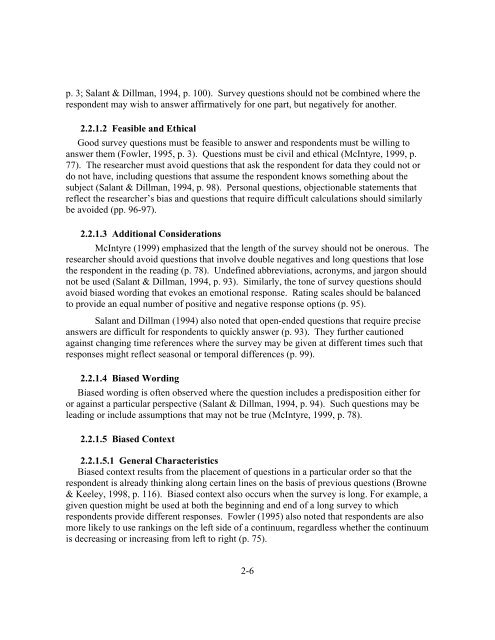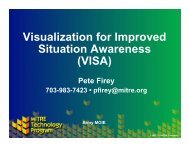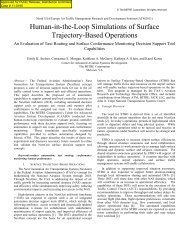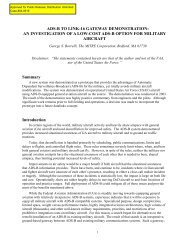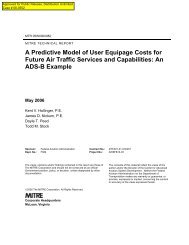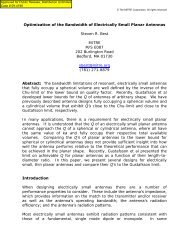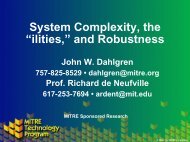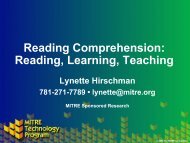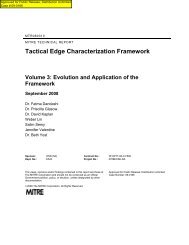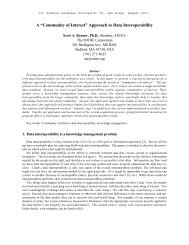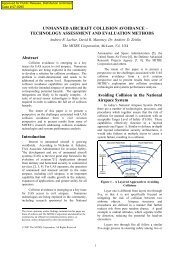Fundamentals of Survey Research Methodology - Mitre
Fundamentals of Survey Research Methodology - Mitre
Fundamentals of Survey Research Methodology - Mitre
You also want an ePaper? Increase the reach of your titles
YUMPU automatically turns print PDFs into web optimized ePapers that Google loves.
p. 3; Salant & Dillman, 1994, p. 100). <strong>Survey</strong> questions should not be combined where the<br />
respondent may wish to answer affirmatively for one part, but negatively for another.<br />
2.2.1.2 Feasible and Ethical<br />
Good survey questions must be feasible to answer and respondents must be willing to<br />
answer them (Fowler, 1995, p. 3). Questions must be civil and ethical (McIntyre, 1999, p.<br />
77). The researcher must avoid questions that ask the respondent for data they could not or<br />
do not have, including questions that assume the respondent knows something about the<br />
subject (Salant & Dillman, 1994, p. 98). Personal questions, objectionable statements that<br />
reflect the researcher’s bias and questions that require difficult calculations should similarly<br />
be avoided (pp. 96-97).<br />
2.2.1.3 Additional Considerations<br />
McIntyre (1999) emphasized that the length <strong>of</strong> the survey should not be onerous. The<br />
researcher should avoid questions that involve double negatives and long questions that lose<br />
the respondent in the reading (p. 78). Undefined abbreviations, acronyms, and jargon should<br />
not be used (Salant & Dillman, 1994, p. 93). Similarly, the tone <strong>of</strong> survey questions should<br />
avoid biased wording that evokes an emotional response. Rating scales should be balanced<br />
to provide an equal number <strong>of</strong> positive and negative response options (p. 95).<br />
Salant and Dillman (1994) also noted that open-ended questions that require precise<br />
answers are difficult for respondents to quickly answer (p. 93). They further cautioned<br />
against changing time references where the survey may be given at different times such that<br />
responses might reflect seasonal or temporal differences (p. 99).<br />
2.2.1.4 Biased Wording<br />
Biased wording is <strong>of</strong>ten observed where the question includes a predisposition either for<br />
or against a particular perspective (Salant & Dillman, 1994, p. 94). Such questions may be<br />
leading or include assumptions that may not be true (McIntyre, 1999, p. 78).<br />
2.2.1.5 Biased Context<br />
2.2.1.5.1 General Characteristics<br />
Biased context results from the placement <strong>of</strong> questions in a particular order so that the<br />
respondent is already thinking along certain lines on the basis <strong>of</strong> previous questions (Browne<br />
& Keeley, 1998, p. 116). Biased context also occurs when the survey is long. For example, a<br />
given question might be used at both the beginning and end <strong>of</strong> a long survey to which<br />
respondents provide different responses. Fowler (1995) also noted that respondents are also<br />
more likely to use rankings on the left side <strong>of</strong> a continuum, regardless whether the continuum<br />
is decreasing or increasing from left to right (p. 75).<br />
2-6


